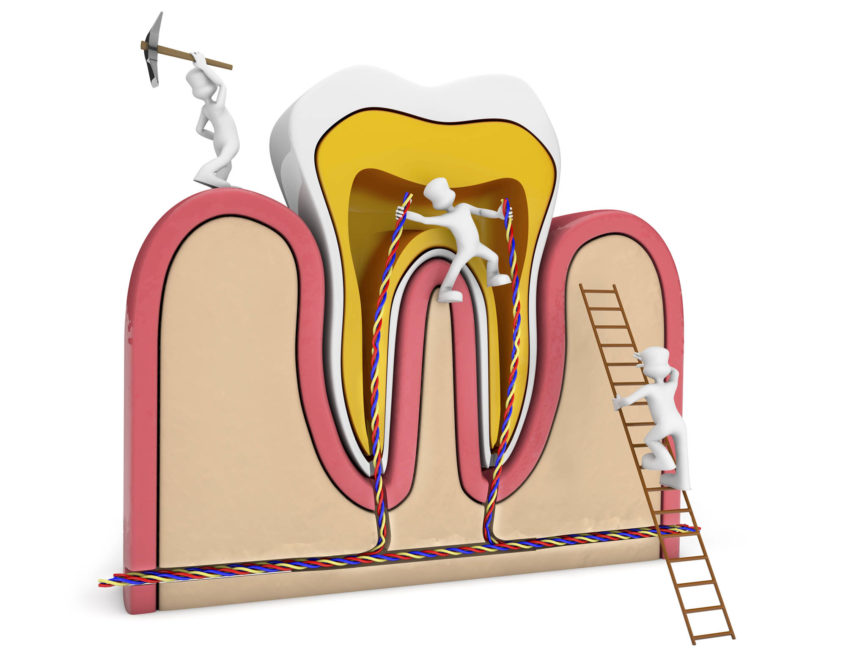More than 15 million root canals are performed annually, according to the American Association of Endodontists. If you’ve been diagnosed with an infected or severely damaged tooth, root canal therapy may be the solution to all of your pain and suffering. This standard procedure involves removing the damaged pulp (the center of the tooth), cleaning and disinfecting the emptied space, then sealing it to prevent bacteria from re-entering. While the advantages of root canals are clear, many patients remain hesitant of their usefulness. In many cases, root canal therapy is the only viable option.
Signs that Root Canal Therapy is Needed
Not sure if you need a root canal? Take a close look at your symptoms. While some teeth that require a root canal never hurt at all, many patients experience some level of tooth pain. This discomfort can range from a sharp, intense pain to a dull ache. Other signs that a root canal may be needed are swelling, gum tenderness, infection, and hypersensitivity to heat. Your dentist may also notice some visible signs that a problem has developed, such as tooth discoloration, soft tissue changes, and evidence of infection drainage.
The Root Canal Procedure
Root canals are often necessary when the pulp becomes inflamed or infected. This procedure begins by placing a rubber dam to “isolate” your tooth and prevent contaminants from affecting the treatment. After injecting an anesthetic to numb the area, the dentist will create an access cavity in which to reach the nerve. The tooth’s root canals are then cleaned and shaped. Once the tooth is prepped, the interior of the tooth is sealed using a filling material.
What to Expect After Root Canal Therapy
After root canal therapy, it’s common to experience some degree of tenderness in the days following. Some discomfort may also be felt in the jaw due to holding your mouth open for an extended period of time during treatment. Most post-root canal symptoms are mild and can be managed with over-the-counter pain medications. If you experience severe pressure or pain that lasts several days, contact your endodontist.
Root Canal Alternatives
When face-to-face with a root canal, many patients seek out other alternatives. While there are no other dental treatments that can be used to salvage a badly infected or decayed tooth, you do have other options. Some individuals opt to have their tooth extracted. While this is the cheapest and easiest fix, it can result in more expensive procedures in the long run. After an extraction, it’s wise to have the tooth replaced, either with an implant, dental bridge, removable partial denture, or another device. If you have severe decay that has caused a deep cavity or a severe tooth infection, a root canal is typically the best option.
Further Treatment After Root Canal Therapy
It’s important to remember that root canal therapy is just the first step in returning your tooth back to its full function. You will need to invest in a final restoration for the tooth to protect it from chewing forces and to ensure long-term success. Most dentists recommend a crown after root canal therapy to help seal the tooth and strengthen it. While root canals ultimately save teeth, they can also weaken them as the pulp inside the tooth is no longer living. Crowns prevent the delicate tooth from fracturing and can restore the natural appearance of your smile.
If you’ve recently been told that you need a root canal, you may be wondering if the procedure is necessary. While everyone is different, root canal therapy is often the best treatment option when a tooth is beyond repairable with dental fillings or antibiotics alone. For more information about this procedure or to schedule an appointment, contact Greater Baltimore Prosthodontics.

